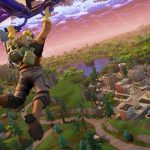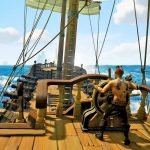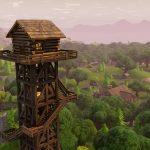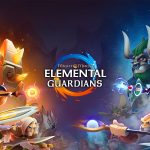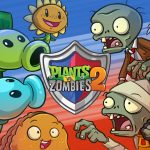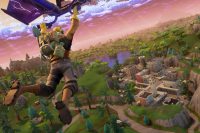First Look at Marvel’s “All-Different” Universe, With A New Hulk, Wolverine’s Return, And More
The comic giant’s refresh is designed to draw first-time readers and experiment with new character twists.
With the success of films like the Avengers franchise and its tie-ins, the Marvel Cinematic Universe has become the dominant superhero player in mainstream pop culture.
Now, with entertainment industry momentum on their side, the creators of the comic books are pushing big changes designed to reset character narratives and create easy entry points for new readers.
The “All-New All-Different Marvel” will launch this fall after the conclusion of Secret Wars, a summer-long series with associated titles that are serving to combine parallel universes and adjust character story lines. The result will affect the entire Marvel Comics line: 55 to 60 new titles will begin at issue No. 1, rolled out over a period of several months. The stories will begin eight months in narrative time after the end of Secret Wars, meaning that within those eight off-page months, things will have happened in characters’ lives to set the stage moving forward. For example, “It could be that they live in a new place or that someone near and dear to them has died, or they’re even married or pregnant,” says Marvel editor-in-chief, Axel Alonso.
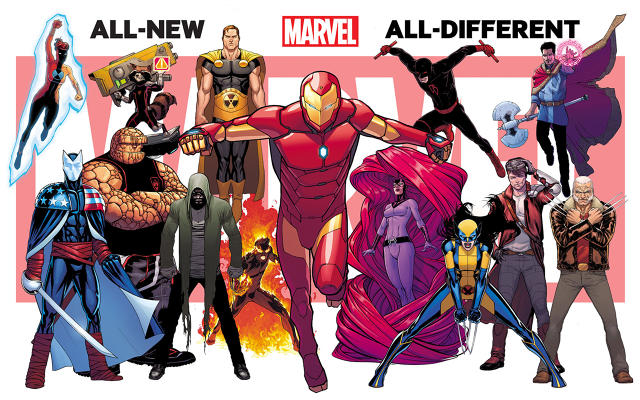
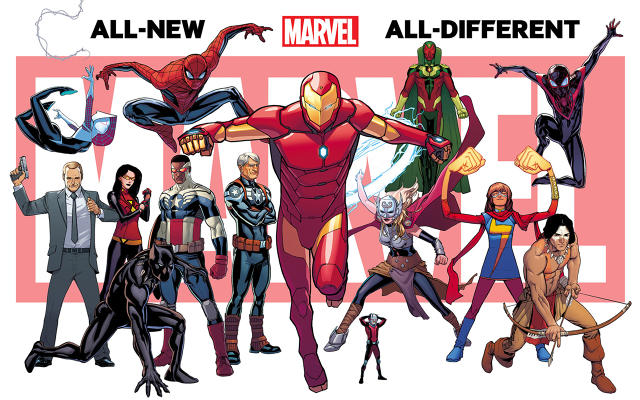
“Comics publishing is slowly evolving into more of a seasonal model,” says Alonso. “We’re allowed to hit a refresh button—not a reboot button, but a refresh button—which allows for the beginning of new stories, new creative teams, new directions, much the same way you see with your favorite binge-worthy cable-television show.” While no specific titles or creative teams have been announced, the new line will feature popular writers including Brian Michael Bendis, Jason Aaron, Mark Waid, Dan Slott, Charles Soule, G. Willow Wilson, and Jeff Lemire.
One element that draws readers to the comics of the largest two publishers, Marvel and DC, are their expansive shared universes—dozens of series and stories are overlapping and taking place at once, so making those connections is fun and challenging. From an editorial standpoint, this approach makes for a rich storytelling toolbox—but it can also get unwieldy, and every few years, the Big Two tend to stage line-wide “events,” usually cataclysmic in nature, that reset the narrative universes (DC is in the middle of its own recalibration, which is called Convergence).
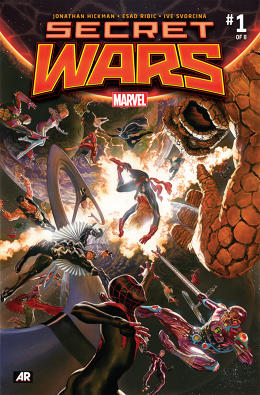
In the case of Secret Wars, multiple Marvel parallel realities have met on one planet, known as Battleworld. While the series is still in its early stages, a known result will be the end of Ultimate Marvel, a popular imprint that has been home to alternate character story lines for 15 years. While this will undoubtedly be disappointing to longtime fans of the Ultimate universe, Alonso says that some of those Ultimate characters will continue in the main continuity, giving Marvel “an incredible, wide array of options to spice up our universe.”
For example, the most recent Spider-Man in the Ultimate universe is Miles Morales, a teenager of black and Hispanic descent who became extremely popular with readers. Alonso says he would rather “leave to speculation” whether Morales will join the new Marvel universe, but also says, “to see a character like Miles Morales in the Marvel universe would be, I think, a seismic event.” Marvel’s All-New All-Different promotional art, above, also strongly suggests his presence in the form of the smaller, black-costumed Spider-Man in the upper right.
Other hints one can glean from the fresh art: the new Marvel Universe will feature three popular, recently introduced female characters—Muslim teenager Kamala Khan, aka Ms. Marvel; Spider-Gwen (Peter Parker’s girlfriend Gwen Stacy from an alternate universe in which she is bitten by the radioactive spider instead of Peter); and the new Thor, whose title has been outselling previous series starring her male predecessor. It also seems likely that the now-female Captain Marvel, aka Carol Danvers, will play an important role in the new Marvel as a character who has inspired a powerful grassroots fan movement. Marvel’s newer female-led comics have been huge sales winners for the company overall—while the first issues of big “event” comics usually sell around 100,000 copies, according to figures released by Diamond Comic Distributors, Spider-Gwen #1 and Thor #1 sold 250,000 and 200,000 respectively, and Ms. Marvel #1 went into seven printings and was the best-selling digital comic for Marvel in 2014.
Update: According to a second new image released on June 5, the new Marvel Universe will also include versions of Superman-inspired Hyperion, the Thunderbolts’ Citizen V, members of the Guardians of the Galaxy, and a green-hooded character who appears to be a dressed-down, street-level Doctor Doom.
Alonso also says that the latest line will introduce a new Hulk “like you’ve never seen him before,” and hints that this Hulk will not be Bruce Banner, although Banner will still exist.
Character shake-ups—particularly when women and minorities take up the mantles of heroes long known as white males—tend to kick up heavy debate among the comic world’s notoriously hardcore fans. “We’re aware that there are going to be old-school, long-term fans who might bristle,” says Alonso. “There will always be those that didn’t enjoy it, and they’ll let you know about it, but ultimately the market tells you if your instincts are right. If we had blinked at the first piece of mail about a female Thor, or African-American Captain America, or Pakistani-American Miss Marvel, if we’d second-guessed ourselves based on that mail, none of those things would have happened. And if we lost one or two fans, we gained eight in return.”
In a move that should anger exactly zero fans, Alonso also tells Fast Company that fan-favorite character Wolverine “will return to the Marvel Universe,” though he won’t say how that will play out [Update: The newly released Marvel art shows that there will be a female version of Wolverine (probably his clone X-23, a.k.a. Laura Kinney, promoted to a Wolverine identity), as well as an “Old Man Logan” version of the character, who was introduced in an alternate future series in 2008 and now exists in Battleworld.] This is significant not only because the virtually immortal mutant died in a story line last year, but because it suggests that the X-Men will have a place in the new world order.
While the X-Men have been one of Marvel’s most popular and best-selling teams for decades, there has been speculation that both they and the Fantastic Four are being pushed out of the comic books for the time being because Marvel Studios doesn’t own the film rights (they’re owned by 20th Century Fox, who distributed last year’s Days of Future Past and will distribute the upcoming Fantastic Four movie). The X-Men and the Fantastic Four are the only Marvel properties to which Marvel doesn’t own the film rights, after a deal with Sony earlier this year that would enable Marvel to use Spider-Man in its films (Sony had held his film rights since 1999). While many fans have been unhappy with the idea that the X-Men and Fantastic Four could be scaled back in the comics, it makes sense that Marvel would devote more page space to characters that they can exploit in movies, and less to those that benefit other studios. Beyond Wolverine, Marvel wouldn’t comment for now on the teams’ status in the new comic-book universe. [Update: The new art released June 5 includes Fantastic Four members the Thing and Johnny Storm, though whether they will be part of the team along with Reed and Sue Richards remains to be seen.}
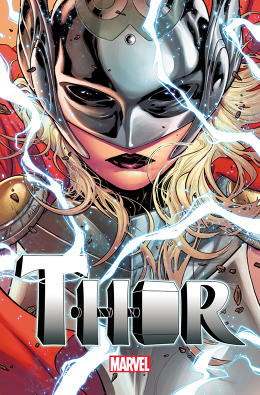
There’s no question that simplifying and starting new stories from the beginning could make the comic books more attractive to fans of the movies; the ongoing, complex nature of comics universes often means that picking one up on a whim is an exercise in confusion and frustration. But Alonso says that he is under no pressure to align the comics content-wise with the films.
“When Avengers: Age of Ultron came out, we had a female Thor and a Superior Iron Man [evil version of Tony Stark] and an African-American Captain America,” says Alonso. “The great thing about the movies is that they’ve created a world for us now in publishing where everyone knows who Iron Man, Captain America, Thor, Black Widow are, right? Everybody knows.”
And now Marvel hopes everyone will want to know even more.
Fast Company , Read Full Story
(180)


